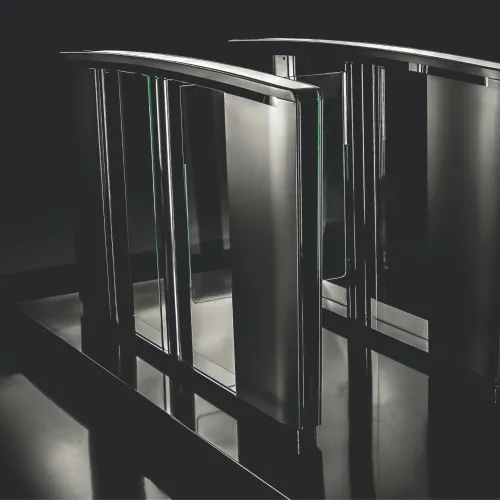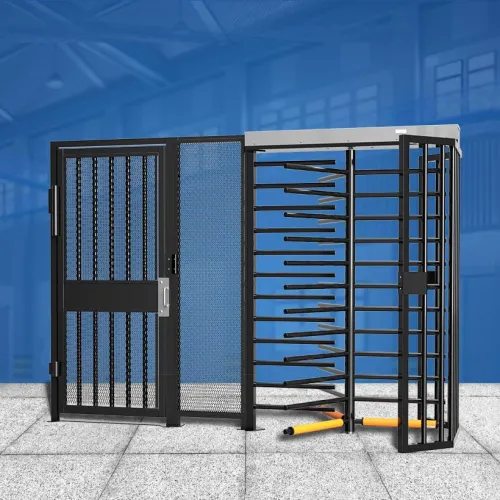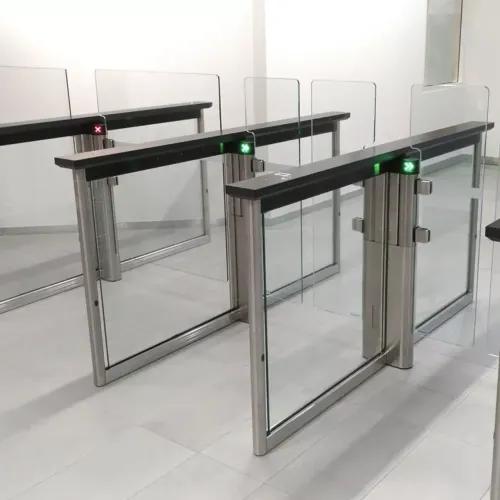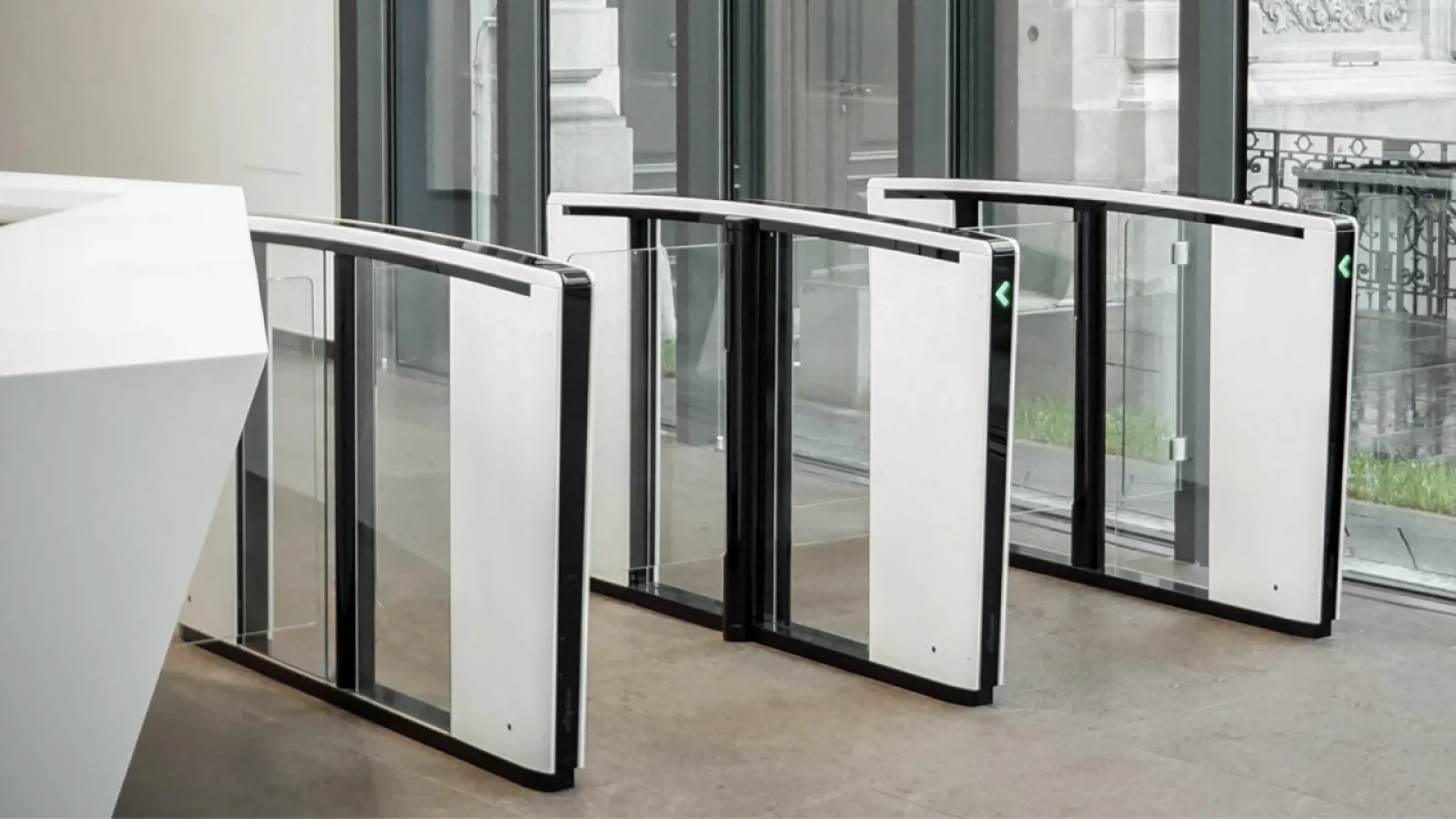
Turnstile Security Access Control Systems in Atlanta, GA
iS3 Tech Services designs and installs turnstile access control systems for facilities across Metro Atlanta. Whether you're securing a corporate office in Buckhead, a fulfillment center near Hartsfield-Jackson, or a healthcare facility in Midtown, our team delivers access solutions that align with your security goals and operational needs.
What Are Turnstile Gates, and How Do They Operate?
A turnstile gate is a mechanical or electronic access control device with rotating arms or doors. These barriers only allow entry when a valid credential or ticket is presented, ensuring access is limited to one person at a time. This prevents the common issue of tailgating, where unauthorized individuals follow closely behind someone with proper credentials.
Once a valid credential is detected, the arms or doors of the turnstile gate rotate to allow entry. The gate locks automatically after the person has passed through until the next person presents their credentials. Turnstiles can be set up to allow entry and exit, depending on the facility's specific needs.
Turnstile gates are designed for use in various settings, from commercial offices to large public venues, and they offer both convenience and security. For instance, turnstiles provide efficient crowd control in environments like stadiums or train stations by ensuring that only ticketed individuals can enter the premises.
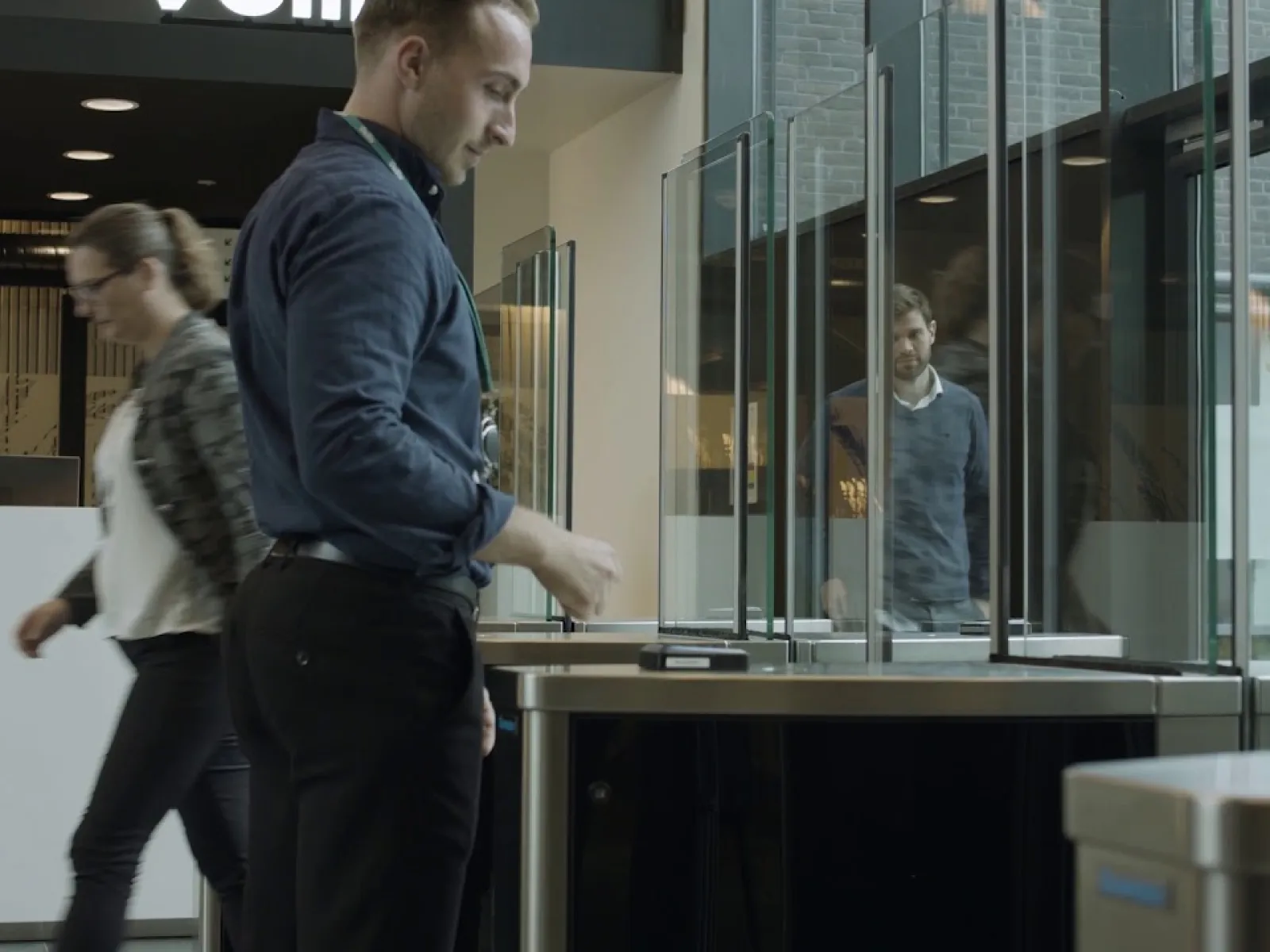
Efficient Access Control
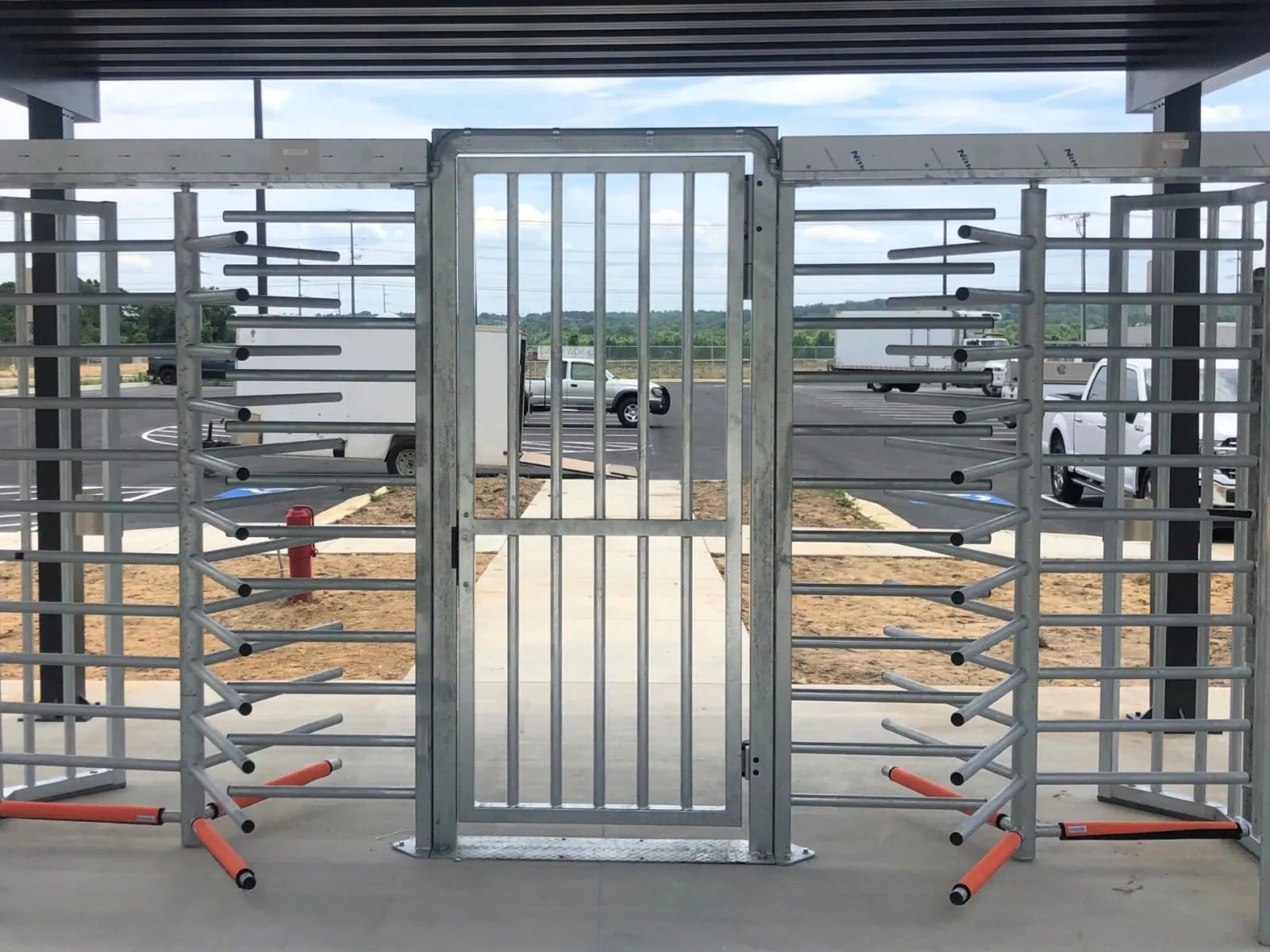
Enhanced Security
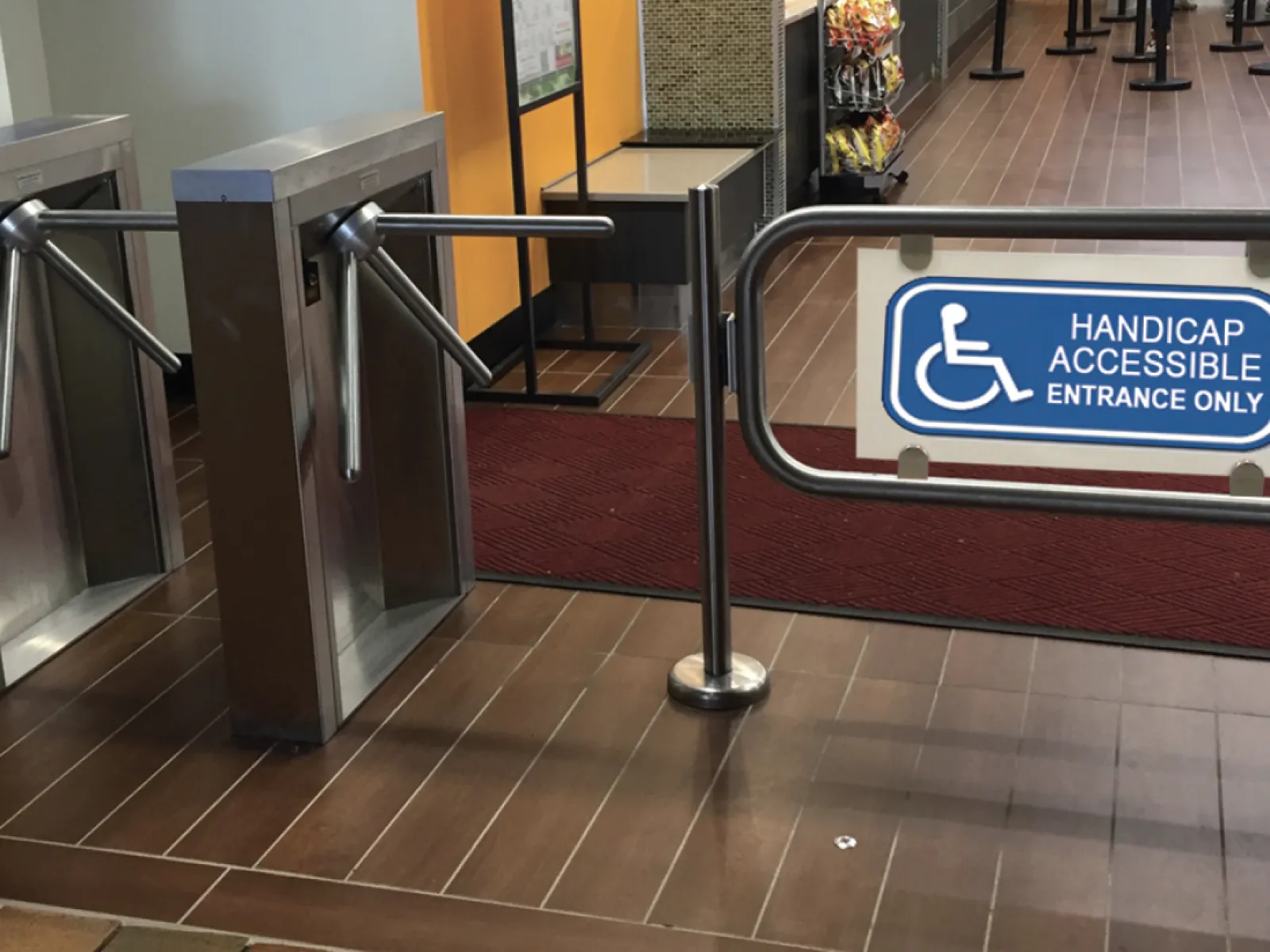
Deterrence and Crowd Control
Turnstiles are effective tools for crowd management. In scenarios like ticketed events or public transportation hubs, they help manage the flow of people, preventing overcrowding and ensuring safety. Their physical presence acts as a visual deterrent to individuals attempting to breach security.
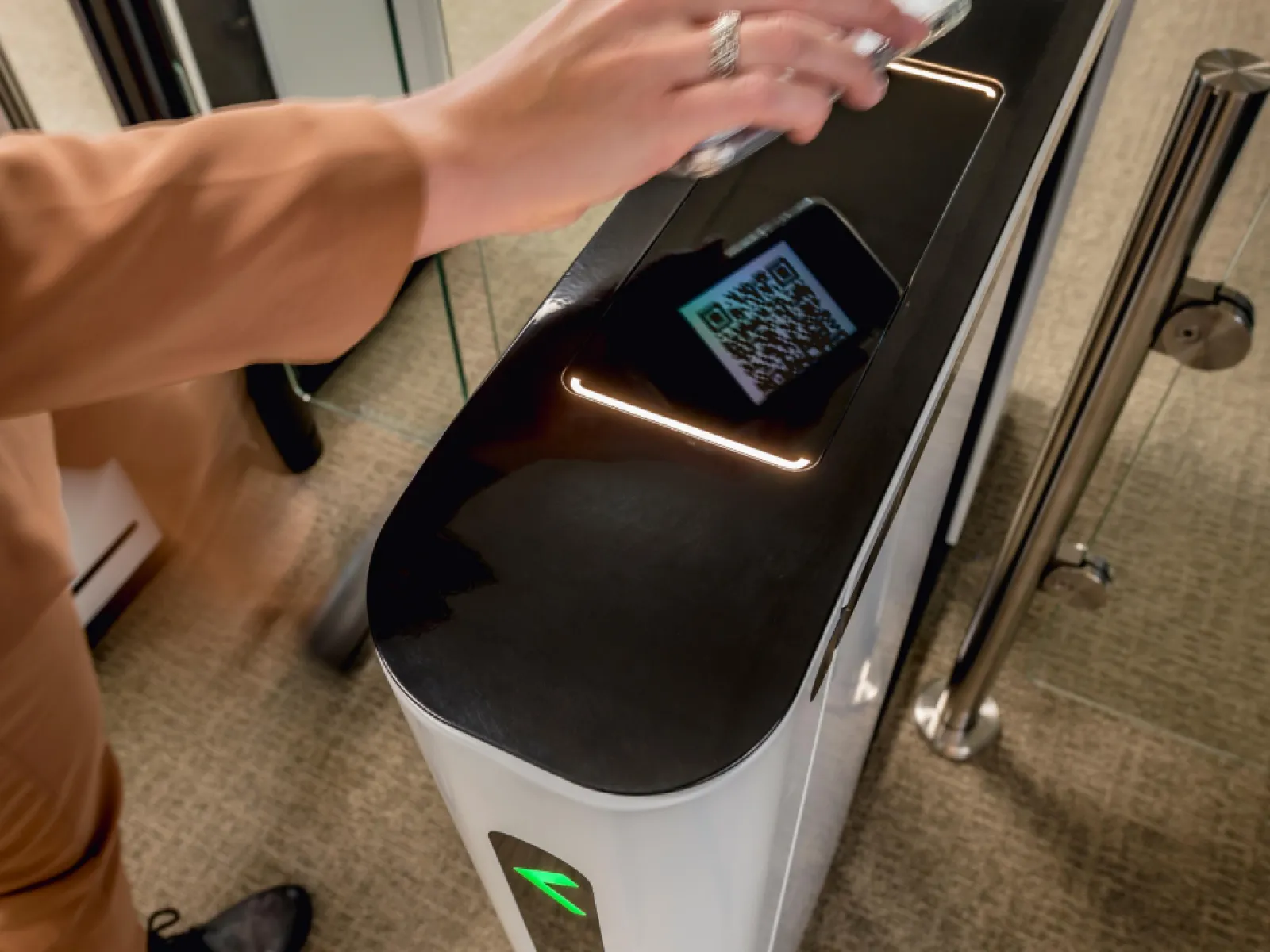
Integration Capabilities
Modern turnstiles are equipped with integration capabilities, allowing them to seamlessly work with other security systems. They can be connected to access control systems, surveillance cameras, and alarms. This integration enables real-time monitoring and provides a comprehensive security solution for facilities of all types.
Types of security turnstile gates, doors, and systems
Waist-High Turnstiles
Waist-high turnstiles, or tripod turnstiles, stand about 40 inches tall and feature a central post with three rotating arms or barriers. They are designed to efficiently and comfortably control access for most individuals. Some variations may use flaps or single arms that open or drop to allow passage.
These turnstiles can be installed as standalone units in compact spaces or multiple lanes to accommodate higher traffic in larger areas. Due to their affordability and versatility, waist-high turnstiles are commonly used indoors and outdoors. They often have readers or devices to validate tickets or credentials, allowing for controlled entry and exit.
Full-Height Turnstiles
Full-height turnstiles provide a much more significant barrier than waist-high models, often functioning similarly to revolving doors. These units are typically seven to eight feet tall, preventing individuals from climbing over them. Full-height turnstiles can be configured for one-way or two-way access, and some suppliers offer tandem models that allow simultaneous entry and exit.
These turnstiles are designed for high-security environments such as government facilities. They can feature either an open design with vertical and horizontal bars or be constructed with solid materials to maximize security.
Optical Turnstiles
Optical turnstiles utilize infrared sensors to detect individuals passing through a designated beam, offering a technologically advanced access control solution. Users can present credentials via a card reader, and valid entries trigger the barrier's opening. An audible or visual alarm will notify security personnel if credentials are invalid.
In addition to controlling access, optical turnstiles can record data, such as the number of people entering a venue, for capacity management and business analysis. These turnstiles are frequently used indoors due to their sleek design and fast, efficient access for authorized individuals, though they provide less physical security than other models.
ADA Gates
ADA-compliant gates ensure accessibility for individuals with disabilities. These gates are more comprehensive than traditional turnstiles and provide a hands-free solution, allowing easy access for visitors using wheelchairs or mobility aids. ADA gates are critical for maintaining compliance with the Americans with Disabilities Act and ensuring all visitors can navigate the area comfortably.
Portable Turnstile Gates
Portable turnstile gates resemble waist-high models but differ because they are not permanently fixed to the ground. These units have a strong base plate and wheels for easy mobility, allowing security personnel to reposition the turnstile as needed quickly.
Portable turnstiles are ideal for temporary crowd control, particularly in areas where permanent access control is not practical or allowed. They can also be used in buildings or venues for temporary events or when fluctuating traffic levels require adaptable solutions.
Turnstiles vs. Open Access: Security and Efficiency Compared
Explore the key differences between facilities equipped with turnstiles and those without, highlighting security and operational efficiency.
Facilities with Turnstiles
-
Enhanced Security: Turnstiles deter unauthorized access, bolstering security compared to facilities without them.
-
Efficient Access Control: Facilities with turnstiles can efficiently manage and control access, ensuring that only authorized individuals are granted entry.
-
Integration with Security Systems: Facilities with turnstiles can integrate them with other security systems like access control, surveillance cameras, and alarms.
-
Visitor Tracking: Turnstiles equipped with access control systems allow for precise visitor tracking. This means facilities can maintain a record of who enters and exits, enhancing accountability and safety.
-
Custom Access Control: Turnstiles can be configured to suit the specific needs of a facility. They can accommodate various access methods, from RFID cards to biometrics, allowing for flexible and tailored access control.
Facilities without Turnstiles
-
Limited Physical Barrier: Facilities without turnstiles lack a physical barrier to entry, making it easier for unauthorized individuals to gain access.
-
Access Control Challenges: Managing and controlling access can be more challenging in facilities without turnstiles, especially in high-traffic areas where manual checks may be required.
-
Crowd Control Issues: Without turnstiles, facilities may experience difficulties managing crowds during events or busy periods. This can lead to congestion and potential safety hazards.
-
Limited Integration: Facilities without turnstiles may have limited integration capabilities with other security systems, which can result in a fragmented and less efficient security setup.
-
Visitor Tracking Limitations: Tracking visitors becomes more challenging in facilities without turnstiles. It may be harder to maintain an accurate record of who enters and exits the premises.
Frequently Asked Questions (FAQs) about Our Turnstile Solutions
Q What are the main types of turnstiles?
Turnstiles come in various types, including tripod, full-height, and optical. Each type serves different security and space requirements.
Q How do turnstiles enhance security in facilities?
Turnstiles act as physical barriers, preventing unauthorized access and ensuring that only authorized individuals can enter. This enhances security and access control.
Q Can turnstiles be integrated with access control systems?
Yes, most turnstiles can be integrated with access control systems, allowing for efficient management of user credentials and permissions.
Q Do turnstiles require regular maintenance?
Like any mechanical device, turnstiles benefit from routine maintenance to ensure optimal performance and longevity.
Q What industries commonly use turnstiles?
Turnstiles are used in various industries, including transportation, stadiums, office buildings, and manufacturing facilities, to regulate access and enhance security.
Q Are turnstiles suitable for outdoor use?
Some turnstiles are designed for outdoor use and are built to withstand various weather conditions.
